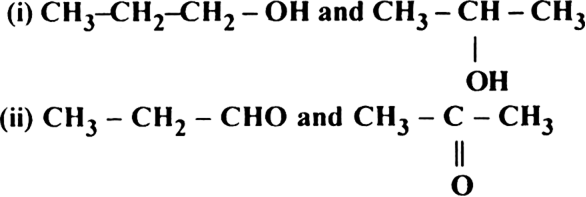Organic Chemistry – Some Basic Principles and Techniques
Discuss the principle of estimation of halogens, sulphur and phosphorus present in an organic compound.
Estimation of phosphorus:
A known mass of an organic compound is heated with fuming nitric acid whereupon phosphorus present in the compound is oxidised to phosphoric acid. It is precipitated as ammonium phosphomolybdate, (NH4)3 PO4.12MoO3, by adding ammonia and ammonium molybdate. Alternatively, phosphoric acid may be precipitated as MgNH4PO4 by adding magnesia mixture which on ignition yields Mg2P2O7.
Estimation of halogens:
Carius method: A known mass of an organic compound is heated with fuming nitric acid in the presence of silver nitrate contained in a hard glass tube known as Carius tube, in a furnace. Carbon and hydrogen present in the compound are oxidised to carbon dioxide and water. The halogen present forms the corresponding silver halide (AgX). It is filtered, washed, dried and weighed.
Estimation of sulphur:
A known mass of an organic compound is heated in a Carius tube with sodium peroxide or fuming nitric acid. Sulphur present in the compound is oxidised to sulphuric acid. It is precipitated as barium sulphate by adding an excess of barium chloride solution in water. The precipitate is filtered, washed, dried and weighed.
Sponsor Area
Some More Questions From Organic Chemistry – Some Basic Principles and Techniques Chapter
What system of nomenclature is accepted universally?
What are isomers?
How many chain isomers are possible for pentane?
Which characteristic is common to different isomers of a compound?
Name three alkanes which do not show chain isomerism.
Name the types of structural isomerism shown by alkanes.
Name the four main types of structural isomerism.
Write the three possible open chains of five carbon atoms
What types of structural isomerism is shown by the following pairs of organic compounds ?
Write the tautomer of acetaldehyde and write its IUPAC name.
Mock Test Series
Sponsor Area
NCERT Book Store
NCERT Sample Papers
Sponsor Area